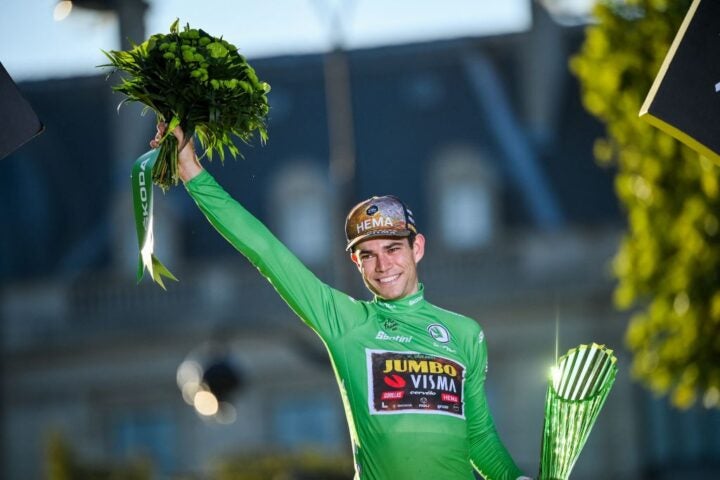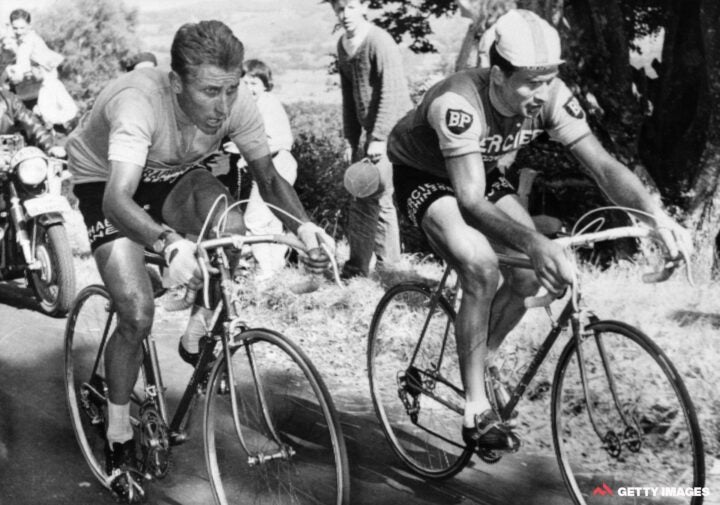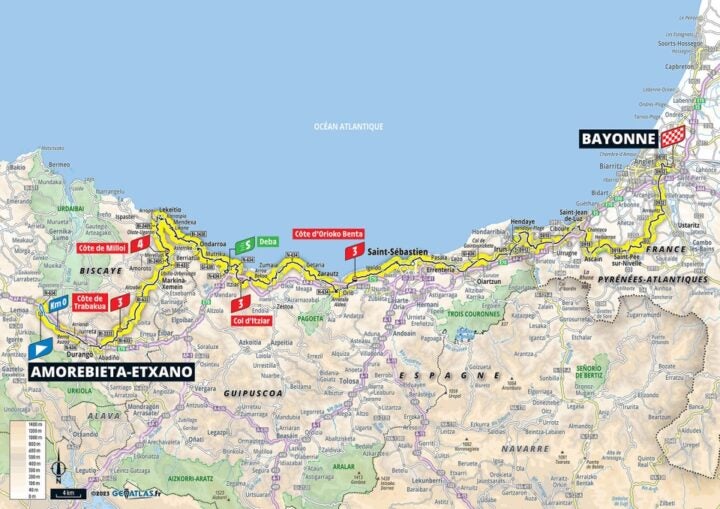Heading out the door? Read this article on the new Outside+ app available now on iOS devices for members! Download the app.
Stage 3 — Monday, July 3
Amorebieta-Etxano to Bayonne
Distance: 187.4km (116.44 miles)
Profile: Undulating stage
Stage 3: A first respite, and a day for the sprinters
On leaving the Basque Country, the peloton has a chance to breathe a little after two intense days of racing. There are four categorized climbs on this stage, which will offer the breakaway riders the chance to score points in the best climber competition, but none of the hills is likely to disrupt the sprinters.
Before returning through the stage 2 finish in San Sebastián, there are two of the climbs along the coast — which will provide magnificent views for a couple of hours. There are no risks of echelons because the route is mostly sheltered from the wind.
Once over the Spain/France border the route is much flatter. The last (uncategorized) climb at Saint-Pée-sur-Nivelle, averaging only a 3-percent grade, is where the final time trial started at the 2018 Tour.
Stage favorites: The battle for the green jersey comes into focus

That last climb won’t hurt the legs of the sprinters and the peloton won’t have too much trouble controlling a breakaway. Consequently, it’s set up for a sprint finish.
The final section to Bayonne is very fast and we should see a first confrontation between Mads Pedersen (Lidl-Trek), Wout van Aert (Jumbo-Visma), Jasper Philipsen (Alpecin-Deceuninck), Dylan Groenewegen (Jayco-AlUla) and Caleb Ewan (Lotto-Dstny).
And what about Mark Cavendish (Astana Qazaqstan) and his bid to equal history? Why not…
Rich heritage in Basque and French racing

Amorebieta-Etxano may be a small town of less than 20,000 inhabitants but it has had a presence in cycling for many years.
Since 1946 it has hosted the UCI-ranked Klasika Primavera race, which includes many big names amongst its past winners. These include Miguel Poblet, Laurent Jalabert, Carlos Sastre, Damiano Cunego, Rui Costa and Alejandro Valverde. Riders from the city include double Giro d’Italia stage winner and past race leader Benat Intxausti, as well as 1960 Vuelta stage winner Felipe Alberdi.
Finish city Bayonne has a rich heritage in the sport, hosting the Tour de France 32 times since 1906. It is 20 years since the race last visited, with American rider Tyler Hamilton soloing to victory there despite a fractured collarbone.
Six Tour winners have taken stages in Bayonne, namely Petit-Breton (1907, 1908 and 1909), Lapize (1910), Lambot (1920), Bottecchia (1925), Frantz (1926) and Anquetil (1966). The city also appeared five times in the Vuelta’s history.
Local riders include Roger Lapébie, winner of the 1937 Tour de France and of nine stages of the Tour. Two time Tour stage winner and 1945 Paris-Roubaix champion Paul Maye also came from there.
Culture and food
Amorebieta-Etxano features several food specialities including zurrukutuna (garlic soup), cod, squid, txuleta and vegetable stew.
Finish location Bayonne marks the first French finish in this year’s race. It is a historic city with ancient settlements, and was occupied by the Romans in the 1st century AD. Menu standouts are Bayonne ham and chocolates.
It hosts the Bayonne Festival each year, one of the most popular annual festive gatherings in south-west France. Architecture includes St. Mary’s Cathedral, dating from 1213 AD, plus the Bayonne Citadel.
